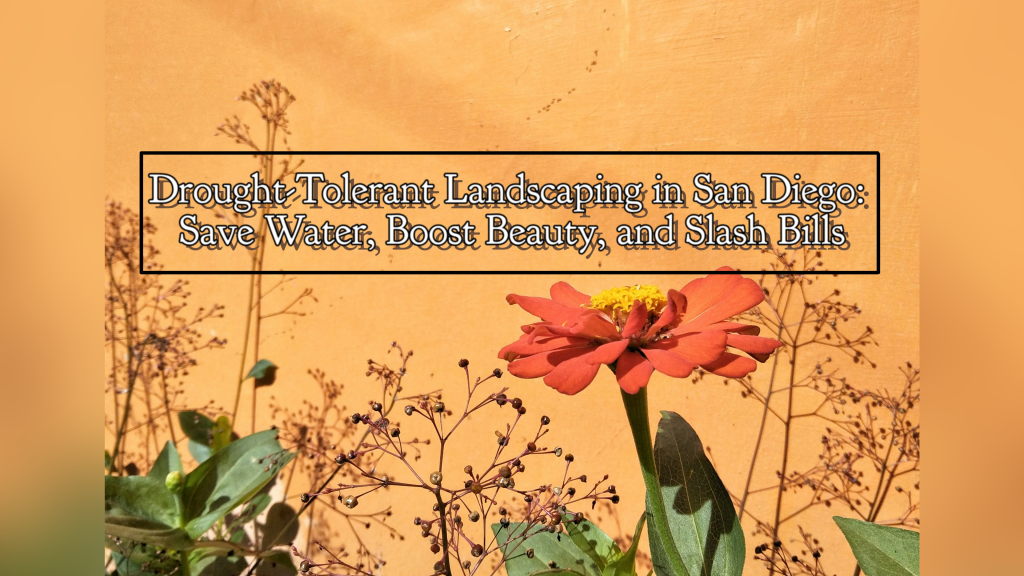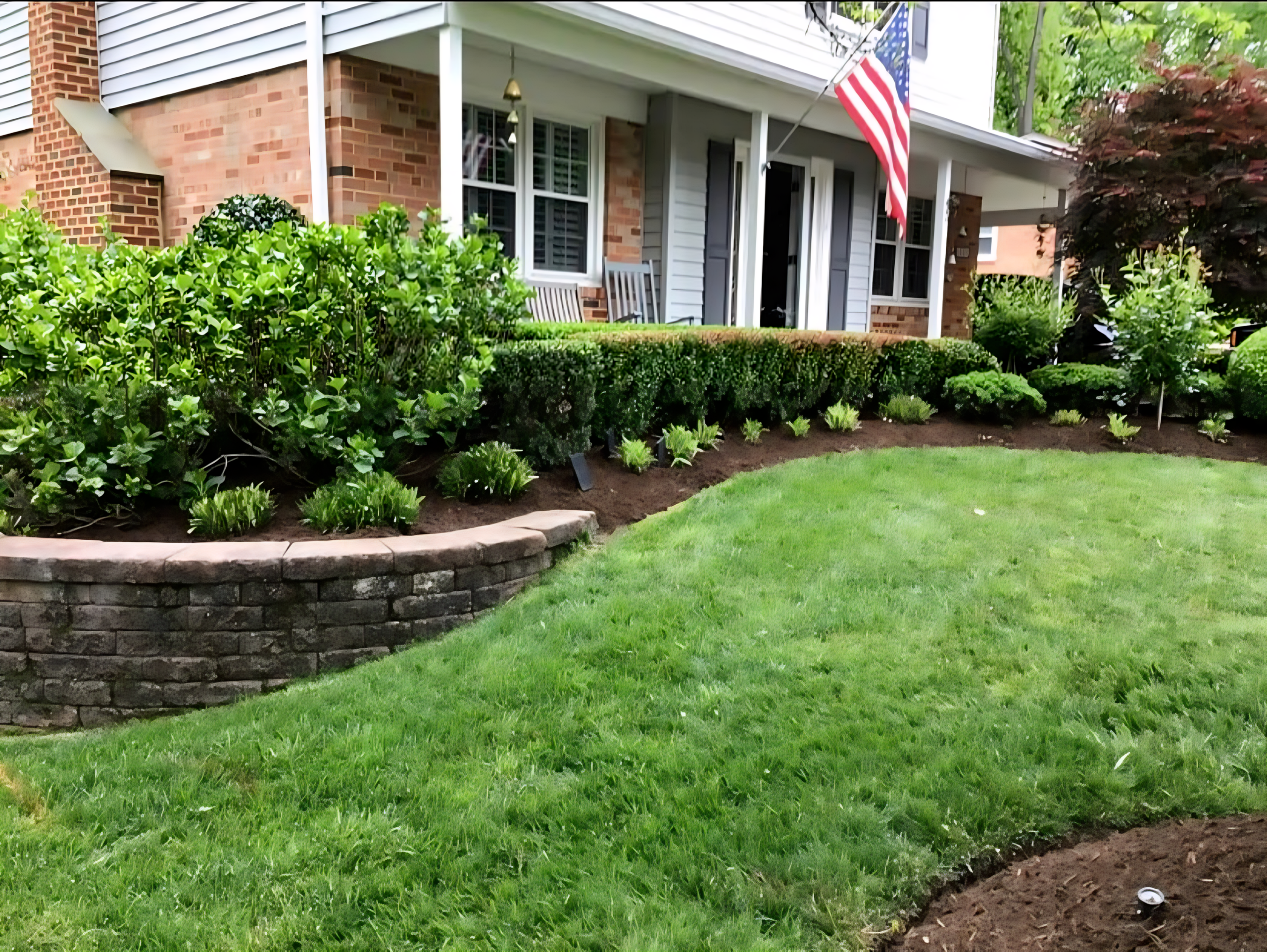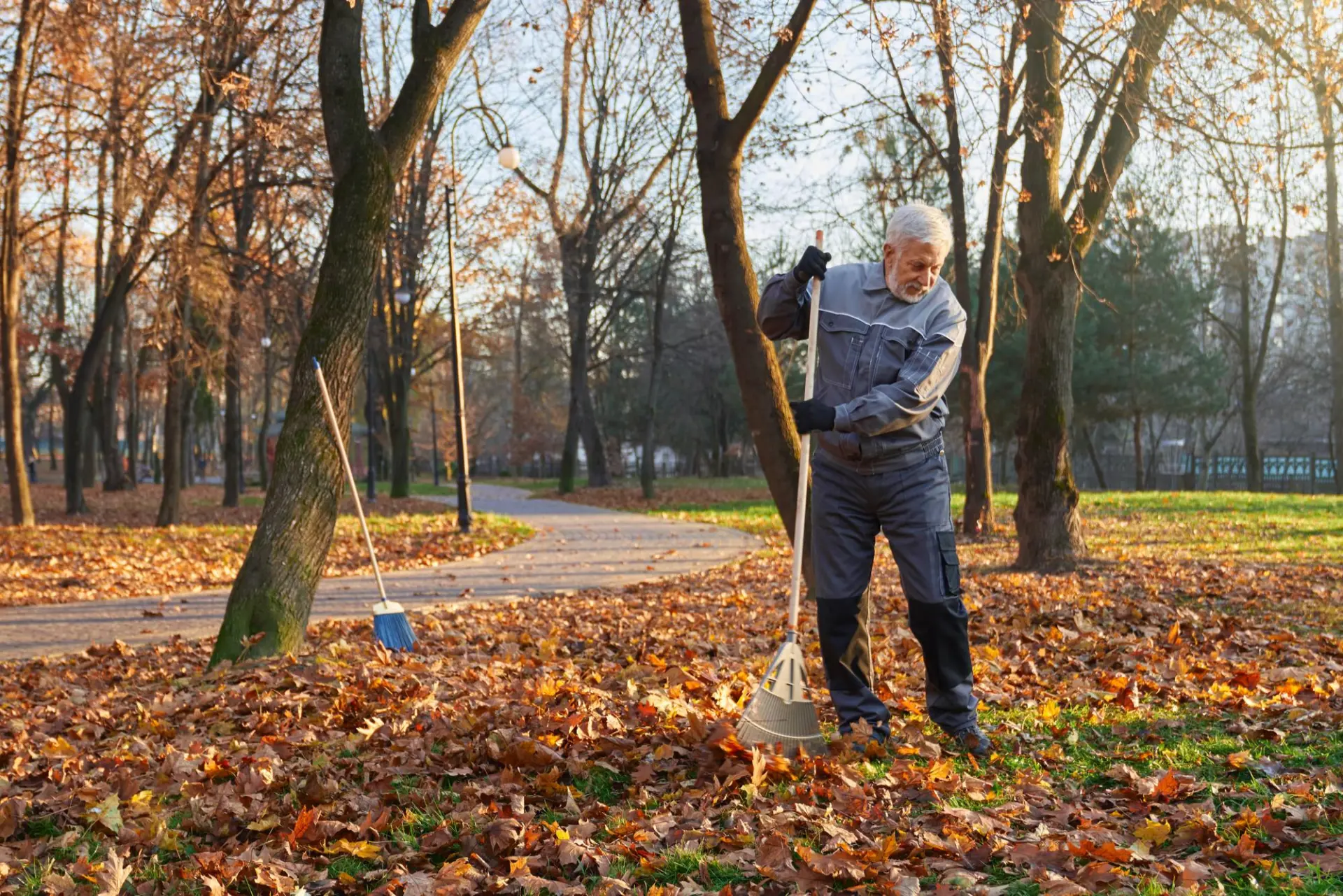Living in San Diego offers a dream lifestyle with over 260 sunny days per year and a stunning Mediterranean climate. However, this paradise comes with a responsibility: managing our precious water resources wisely. With permanent water restrictions in place and a climate inherently prone to drought, many homeowners are seeking sustainable solutions that don’t sacrifice beauty. Enter: drought tolerant landscaping San Diego. This approach offers the perfect solution.
This approach allows you to create a stunning, resilient outdoor space that thrives in our local conditions while significantly reducing your water usage and maintenance time. This comprehensive guide provides everything you need to know to transform your San Diego yard into a water-wise oasis, from plant selection and design to irrigation and financial incentives.
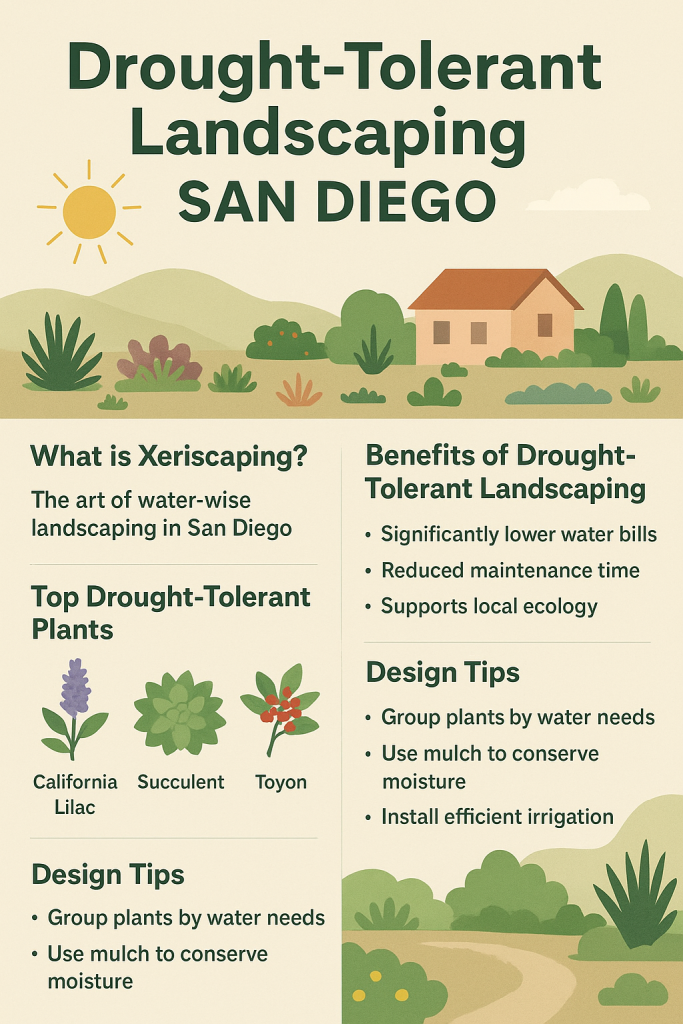
What is Xeriscaping? The Art of Water-Wise Landscaping in San Diego
Often called “xeriscaping” (from the Greek xeros for “dry” and scape for “view”), drought-tolerant landscaping is far more than just a gardening trend—it’s a holistic philosophy for creating beautiful, resilient outdoor spaces that work in harmony with San Diego’s semi-arid climate, not against it. This approach originated in the western United States, including Denver, Colorado, in response to periods of severe water scarcity and has become a cornerstone of sustainable landscaping in regions like Southern California.
The core principle of xeriscaping is to dramatically reduce or eliminate the need for supplemental irrigation by making intelligent choices. This involves selecting plants naturally adapted to dry conditions (especially California natives), improving soil to retain moisture, and employing design techniques that minimize water waste.
Contrary to a common misconception, a xeriscape doesn’t have to be a barren, rocky landscape filled only with cacti. Modern xeriscaping offers incredible aesthetic diversity, allowing for everything from lush, colorful cottage gardens to serene, minimalist desert designs. For those who desire the low-maintenance benefits of stone, professional rock landscaping in San Diego can artfully incorporate boulders, gravel pathways, and dry creek beds to create stunning, water-wise features that enhance the overall design, all while supporting local biodiversity by providing habitats for native pollinators.
When homeowners weigh the benefits of drought-tolerant landscaping in San Diego, the benefits are compelling. Adopting this approach can reduce outdoor water usage by 50-75%, leading to significant savings on utility bills. It also drastically cuts down on maintenance time, eliminating the need for constant mowing, fertilizing, and battling lawn diseases, while simultaneously contributing to regional water sustainability goals. It’s a practical and beautiful solution that aligns perfectly with the environmental and economic realities of life in San Diego.
Why San Diego Homeowners are Embracing the Water-Wise Revolution
Transitioning to a drought-tolerant landscape is more than an ecological choice; it’s a smart financial and lifestyle decision for San Diego residents, driven by several compelling factors:
- Significantly Lower Water Bills: This is the most immediate benefit. Drought-tolerant plants require a fraction of the water that traditional lawns demand, leading to substantial savings on your monthly bill, especially during the dry summer months. For example, the City of San Diego’s tiered water pricing means that high usage costs significantly more per unit, so reducing consumption has a direct impact on your utility costs.
- Effortless Compliance with Local Regulations: The City of San Diego enforces mandatory, year-round water restrictions, limiting irrigation to before 10 a.m. or after 6 p.m. to minimize evaporation. A native landscape is designed from the ground up to comply effortlessly with these rules, eliminating the worry of accidental violations.
- Drastically Reduce Maintenance Time: Say goodbye to weekly mowing, constant fertilizing, and battling lawn diseases. Native and adaptive plants are already suited to our soil and climate, requiring far less upkeep than a thirsty turfgrass lawn. This translates to more free weekends to enjoy San Diego’s beautiful beaches and parks rather than toiling in the yard.
- Boost Curb Appeal & Property Value: A well-designed xeriscape is not a barren rock field. It’s a lush, textured, and colorful landscape that offers year-round interest and can significantly enhance your home’s aesthetic and market value. Studies have shown that attractive, low-water landscaping can increase property values by as much as 15%.
- Support Local Ecology & Fire Resistance: Choosing California native plants provides essential habitat and food for local pollinators like bees, butterflies, and birds, actively supporting San Diego’s native ecosystem and biodiversity. Furthermore, many native species are naturally fire-resistant, an important consideration for properties near wildland interfaces.
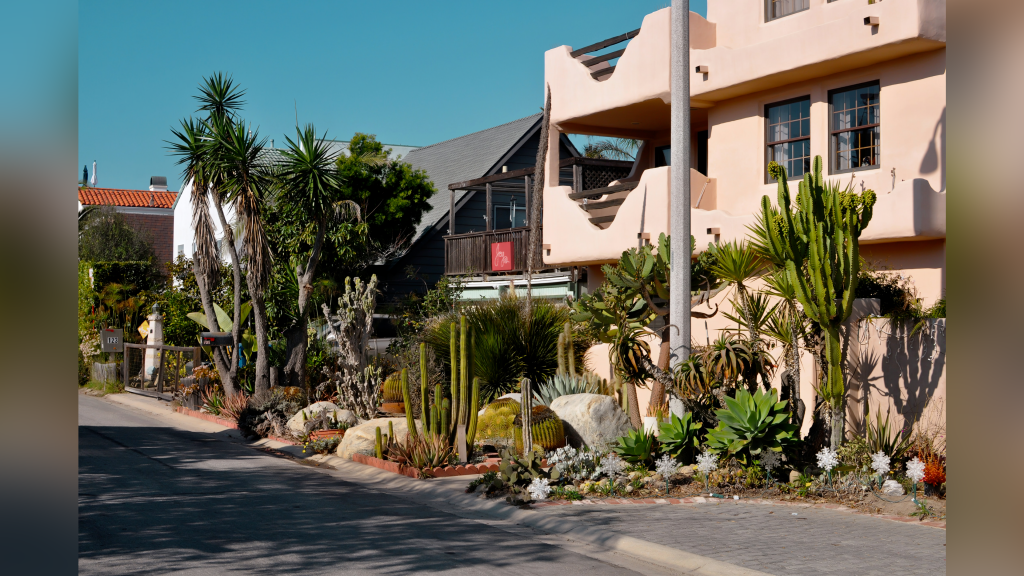
Understanding San Diego’s Unique Landscape Challenges
To succeed, your landscaping must address the specific conditions of the region:
- Soil Types: Much of San Diego has clay-heavy soil that compacts easily and has poor drainage, affecting plant health and water absorption. Amending soil with compost is crucial for success.
- Microclimates: San Diego features a range of microclimates. Coastal areas are cooler and foggier, while inland valleys experience hotter, drier summers. East County areas can see frost in winter. Choosing plants suited to your specific zone is critical.
- Pests: Common pests like grubs, sod webworms, and aphids can still be an issue. A healthy, drought-tolerant landscape is more resilient, but integrated pest management practices are recommended.
Top Drought-Tolerant Plants for San Diego’s Climate
Selecting the right plants is the cornerstone of a successful water-wise garden. Here are some top performers chosen for their beauty, resilience, and proven suitability for our region :
Native Shrubs & Perennials:
- California Lilac (Ceanothus): Known for its stunning bursts of deep blue or purple flowers in spring. It’s a cornerstone native shrub that thrives on neglect once established and is a major pollinator attractor.
- Manzanita (Arctostaphylos): Prized for its gorgeous, smooth red bark and evergreen foliage. It’s a tough, native shrub that provides structure and winter interest. Varieties like “Dr. Hurd” can become small trees.
- Cleveland Sage (Salvia clevelandii): This aromatic native fills the air with a fragrant, earthy scent, especially after rain. It produces beautiful lavender flower spikes that hummingbirds adore.
- Matilija Poppy (Romneya coulteri): Known as the “fried egg plant” for its huge, white crepe-paper flowers with yellow centers. It makes a dramatic statement and spreads vigorously via rhizomes.
- Toyon (Heteromeles arbutifolia): California’s official state native plant, also called California Holly. It features creamy white flowers, red berries that birds love, and is extremely fire-resistant.
Succulents & Architectural Plants:
- Agave: The ultimate in architectural interest. Species like Blue Agave or Artichoke Agave provide bold, sculptural forms and are incredibly drought-resistant.
- Aloe: Torch Aloe adds a vibrant splash of orange flowers, while Soap Aloe is a great groundcover. Both have medicinal properties.
- New Zealand Flax (Phormium tenax): Offers striking, sword-like foliage in colors ranging from burgundy to bronze-green, adding a modern architectural element.
Drought-Tolerant Ground Covers (Alternative Lawn):
- Dymondia (Dymondia margaretae): A low-growing, silvery-green plant that can handle light foot traffic and produces small yellow flowers.
- Kurapia (Lippia nodiflora): A newer, ultra-tough groundcover that forms a dense mat, chokes out weeds, and requires very little water once established. It’s becoming a popular lawn alternative in San Diego.
- Creeping Thyme: Releases a wonderful fragrance when walked on and produces a carpet of tiny pink or purple flowers.
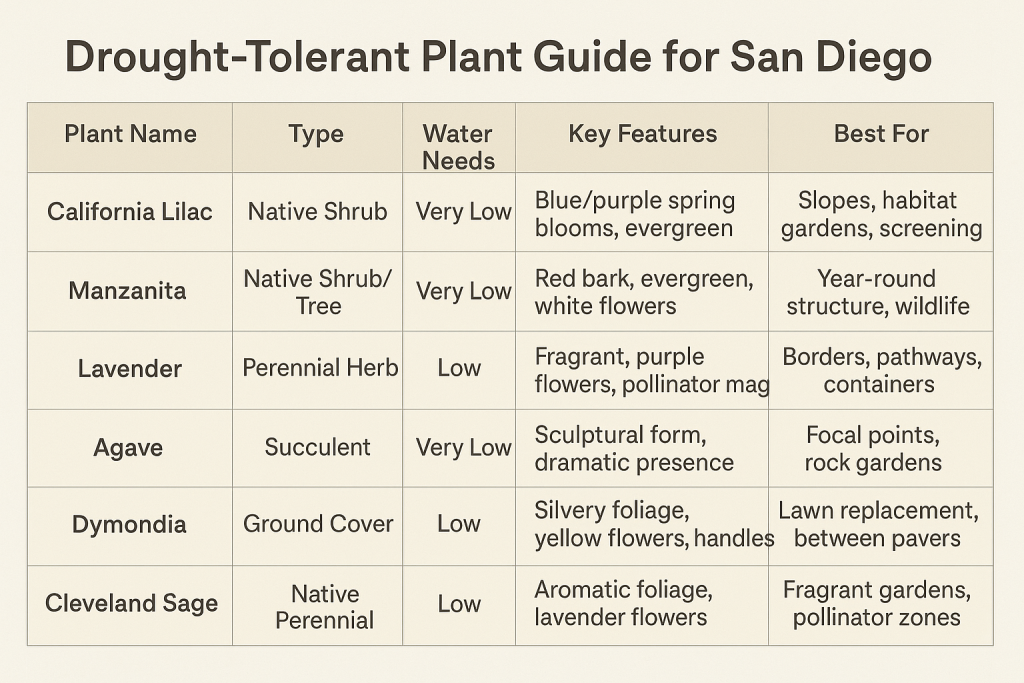
While plants form the living canvas of your landscape, the true magic often happens when they are complemented by intentional design and structure. Integrating garden features—such as bird baths, decorative pots, or even small architectural elements—can add personality and focal points to your water-wise garden. For those looking to create a truly cohesive and stunning outdoor environment, exploring professional garden feature design and installation can elevate the entire space.
Designing Your Water-Wise San Diego Oasis: Principles for Success
A sustainable landscape requires intelligent design to maximize water savings and visual impact. Follow these core principles:
- Master Hydrozoning: Group plants with similar water and sun needs together. This allows for precise irrigation, preventing water waste. Confine thirsty plants to one small area.
- Harness Mulch: Apply a 3-4 inch layer of organic mulch to retain soil moisture, cool roots, and suppress weeds. For slopes, inorganic mulch like rock is a long-lasting option.
- Incorporate Hardscaping: Use non-plant elements like gravel paths, rock gardens, and stone patios to create beauty without water. For major projects, professional rock landscaping services in San Diego can install stunning, permanent features.
- Install Smart Irrigation: Use drip systems for targeted watering. Pair them with smart controllers that adjust based on weather. For a complex, compliant system, consult experts in irrigation services in San Diego.
- Start with Soil Health: Healthy soil retains water better. San Diego’s often clay-heavy soil can benefit greatly from amendment with compost to improve its structure and water-holding capacity, giving your plants a better foundation to thrive with less water. A simple soil test can reveal pH and nutrient deficiencies to address.
By following these design principles, you lay the foundation for successful and stunning drought tolerant landscaping in San Diego that will thrive for years to come.
Implementation: A Step-by-Step Guide to Conversion
Converting your lawn doesn’t have to be overwhelming. Here’s a phased approach:
- Plan and Design: Sketch your yard. Define hydrozones and hardscaping areas. Choose your plants.
- Remove the Lawn: The most labor-intensive part. Options include sheet mulching (smothering with cardboard and mulch), renting a sod cutter, or using a targeted herbicide (least eco-friendly).
- Amend the Soil: Till 3-4 inches of compost into the planting beds to improve soil structure.
- Install Irrigation: Lay out your drip lines or soaker hoses according to your hydrozones before planting. For a hassle-free and professionally optimized setup, many San Diego homeowners choose to hire experts specializing in irrigation installation
- Plant and Mulch: Plant your selections, water them in well, and then apply a thick layer of mulch immediately.
- Establish: Water new plants more frequently for the first 4-6 weeks to help their roots establish, then gradually taper off to the normal drought-tolerant schedule.
How to Get Paid to Upgrade Your Landscape: San Diego’s Rebate Programs
One of the best incentives homeowners have to start drought tolerant landscaping in San Diego is the SoCal Water$mart Turf Replacement Rebate program. This program offers a financial incentive (currently $3 per square foot) to remove water-thirsty grass and replace it with California Friendly® landscaping, which includes drought-tolerant plants, mulch, and efficient irrigation. This rebate can offset a significant portion of your project cost, making the transition to a water-wise yard more affordable than ever. Be sure to apply for the rebate before you start your project and ensure your plan meets all the program’s requirements.
Addressing Common Challenges and Misconceptions
- “It will look like a barren desert.” This is the biggest misconception. As the plant list above shows, a xeriscape can be incredibly lush, colorful, and full of texture. It’s about choosing the right plants, not just rocks and cacti.
- “The installation cost is too high.” While the initial investment can be higher than sod, the long-term savings on water bills and maintenance quickly offset the cost. The rebate program also significantly reduces the upfront expense.
- “I can never have a green space.” Consider incorporating a small patch of drought-tolerant grass like UC Verde Buffalo grass or Bermuda grass for play areas. Alternatively, use soft, walkable groundcovers like Kurapia or Dymondia.
Your Lush, Water-Smart Garden Awaits
Creating a drought-tolerant landscape in San Diego is an investment in your home’s future, your wallet, and the city’s environment. By thoughtfully selecting plants suited to our climate and employing smart design principles, you can create a resilient, beautiful outdoor living space that aligns perfectly with our local conditions.
Ready to get started? Explore the San Diego County Water Authority’s Landscape Makeover resources for detailed guides and plant lists. For personalized advice, consider consulting a landscaper certified in water-wise practices. Embrace the water-wise revolution and discover how your yard can become a testament to sustainable beauty.
References
- City of San Diego. (2023). Water Conservation Regulations. Public Utilities Department. Retrieved from https://www.sandiego.gov/water/conservation
- University of California, Division of Agriculture and Natural Resources (UC ANR). (2022). The California Garden Web: Drought and Water Conservation. Retrieved from https://cagardenweb.ucanr.edu/Drought_Water_Conservation/
- LawnStarter. (2023). 10 Summer Lawn Care Tips for San Diego. Retrieved from https://www.lawnstarter.com/blog/california/san-diego/san-diego-summer-lawn-care-tips/
- Designs 4 You (2024). The Essential Guide to Xeriscaping in San Diego County. Retrieved from https://www.designs4yousd.com/guide-xeriscaping-san-diego/
- Deep Rooted Design (n.d.). Xeriscape Landscape Yard Design Tips from Professional Landscape Contractors. Retrieved from https://www.deeprooteddesigns.com/blog/xeriscape-landscaping-designs-san-diego-ca
- San Diego County Water Authority. (2023). Landscape Makeover Resources. Retrieved from https://www.watersmartsd.org/landscape-makeover
- California Native Plant Society. (2023). Gardening with Natives. Retrieved from https://www.cnps.org/gardening
- LawnStarter. (2023). *12 Ways to Create Low-Maintenance Landscaping in San Diego*. Retrieved from https://www.lawnstarter.com/blog/landscaping/low-maintenance-landscaping-san-diego/
- Drab to Fab. (2023). Low-Maintenance Landscaping: The Ultimate Guide for Busy San Diego Homeowners. Retrieved from https://www.drabtofab.com/low-maintenance-landscaping-the-ultimate-guide-for-busy-san-diego-homeowners
- Lawn Doctor. (2023). Lawn Care Services in San Diego, CA. Retrieved from https://www.lawndoctor.com/oceanside-ca/lawn-care-in-san-diego/
- Metropolitan Water District of Southern California. (2023). SoCal Water$mart Rebates. Retrieved from https://socalwatersmart.com/
- University of California, Davis. (2019). What is Drip Irrigation?. Retrieved from https://ucanr.edu/sites/UrbanHort/Water_Use_of_Turfgrass_and_Landscape_Plant_Areas/Irrigation_Systems_and_Controllers_202/Drip_Irrigation/
- Metropolitan Water District of Southern California. (2023). SoCal Water$mart Turf Replacement Rebate. Retrieved from https://socalwatersmart.com/en/residential/rebates/turf-replacement-rebate/
- UC Master Gardeners of San Diego County. (2023). Home. Retrieved from https://www.mastergardenersd.org/
